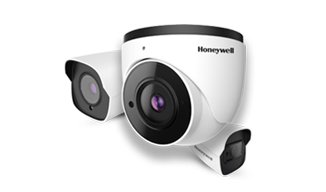Optimizing Lighting Conditions for Effective CCTV Camera Performance
3/1/20242 मिनट पढ़ें


In the world of surveillance, the effectiveness of CCTV cameras relies heavily on the lighting conditions in which they operate. Proper positioning and management of lighting sources can significantly impact the quality and clarity of the captured images. In this article, we will explore the importance of lighting conditions and provide some tips on how to optimize them for optimal CCTV camera performance. One of the primary considerations when positioning CCTV cameras is to avoid direct sunlight. Direct sunlight can cause harsh shadows and overexposure, resulting in poor image quality. When choosing the location for your cameras, consider the path of the sun throughout the day and ensure that the cameras are not directly facing it. Instead, position the cameras in areas where they can benefit from the natural light without being directly exposed to the sun's rays. Another factor to consider is glare. Glare can occur when there are bright light sources, such as streetlights or headlights, in the camera's field of view. This can cause reflections and distortions, making it difficult to see the details in the captured images. To minimize glare, position the cameras in a way that avoids direct exposure to these light sources. Additionally, consider using anti-glare coatings on camera lenses or installing shades to block out excessive light. Investing in cameras with low-light capabilities or infrared technology is another effective way to enhance CCTV camera performance in various lighting conditions. Low-light cameras are designed to capture clear images even in dimly lit environments, making them ideal for nighttime surveillance. Infrared cameras, on the other hand, use infrared light to illuminate the scene, allowing for visibility in complete darkness. By incorporating these advanced camera technologies, you can ensure that your surveillance system performs optimally regardless of the lighting conditions. In addition to positioning and camera selection, it is essential to regularly maintain and clean your CCTV cameras to ensure optimal performance. Dust, dirt, and smudges on the camera lenses can significantly impact image quality, especially in low-light conditions. Regularly inspect and clean the lenses to remove any obstructions that may affect the camera's ability to capture clear images. Lastly, consider using supplementary lighting sources to enhance the overall lighting conditions in areas where CCTV cameras are installed. This can include strategically placed spotlights or floodlights to provide additional illumination, particularly in poorly lit areas. By supplementing the existing lighting, you can improve the visibility and clarity of the captured images, ensuring that your surveillance system is operating at its best. In conclusion, lighting conditions play a crucial role in the effectiveness of CCTV cameras. By positioning the cameras to leverage natural and artificial lighting sources effectively, avoiding direct sunlight and glare, investing in cameras with low-light or infrared capabilities, and maintaining and cleaning the cameras regularly, you can optimize the performance of your CCTV surveillance system. Remember, a well-lit environment contributes to clearer images, making it easier to identify and analyze any potential security incidents.






